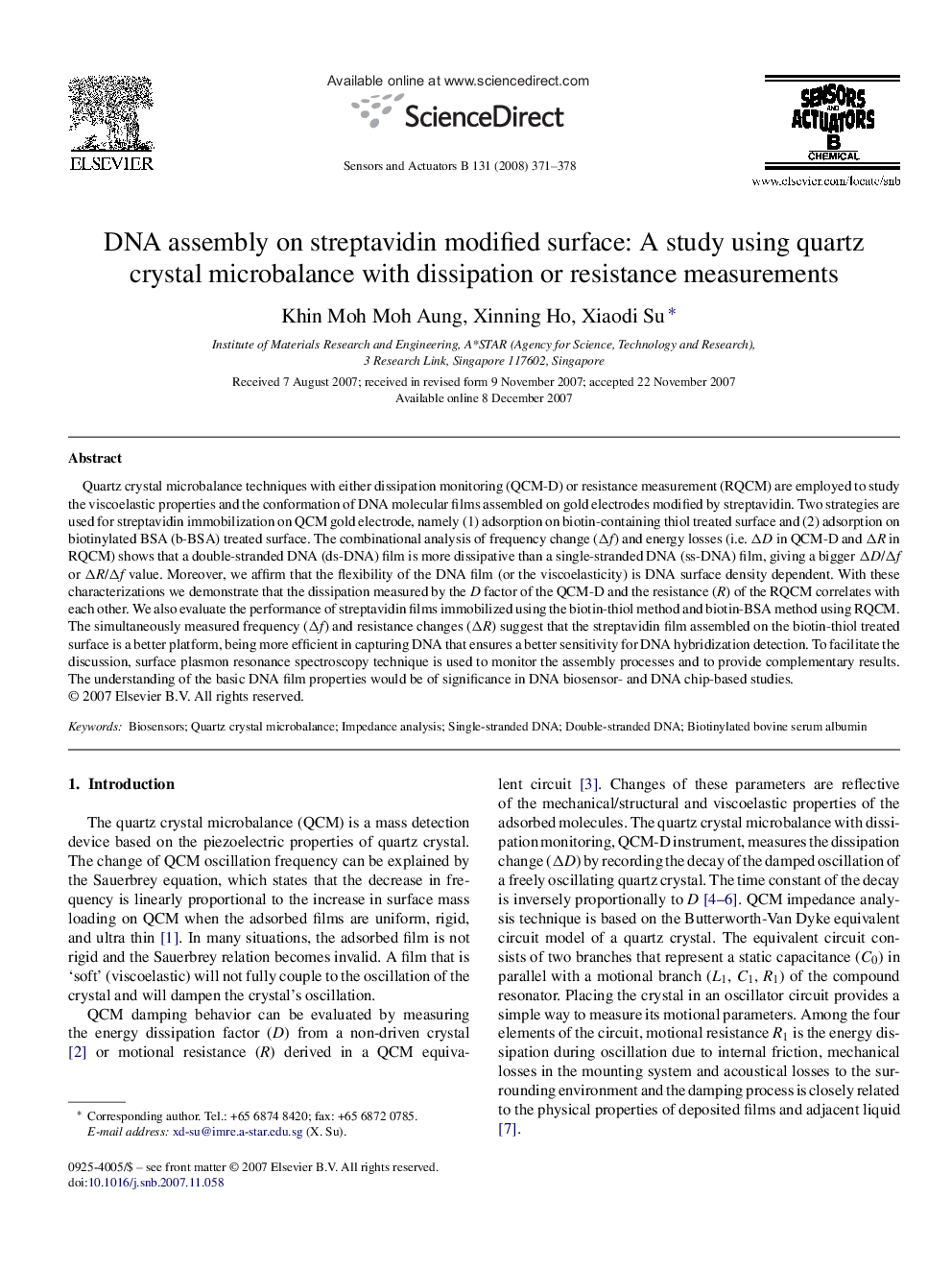| Article ID | Journal | Published Year | Pages | File Type |
|---|---|---|---|---|
| 743883 | Sensors and Actuators B: Chemical | 2008 | 8 Pages |
Quartz crystal microbalance techniques with either dissipation monitoring (QCM-D) or resistance measurement (RQCM) are employed to study the viscoelastic properties and the conformation of DNA molecular films assembled on gold electrodes modified by streptavidin. Two strategies are used for streptavidin immobilization on QCM gold electrode, namely (1) adsorption on biotin-containing thiol treated surface and (2) adsorption on biotinylated BSA (b-BSA) treated surface. The combinational analysis of frequency change (Δf) and energy losses (i.e. ΔD in QCM-D and ΔR in RQCM) shows that a double-stranded DNA (ds-DNA) film is more dissipative than a single-stranded DNA (ss-DNA) film, giving a bigger ΔD/Δf or ΔR/Δf value. Moreover, we affirm that the flexibility of the DNA film (or the viscoelasticity) is DNA surface density dependent. With these characterizations we demonstrate that the dissipation measured by the D factor of the QCM-D and the resistance (R) of the RQCM correlates with each other. We also evaluate the performance of streptavidin films immobilized using the biotin-thiol method and biotin-BSA method using RQCM. The simultaneously measured frequency (Δf) and resistance changes (ΔR) suggest that the streptavidin film assembled on the biotin-thiol treated surface is a better platform, being more efficient in capturing DNA that ensures a better sensitivity for DNA hybridization detection. To facilitate the discussion, surface plasmon resonance spectroscopy technique is used to monitor the assembly processes and to provide complementary results. The understanding of the basic DNA film properties would be of significance in DNA biosensor- and DNA chip-based studies.
